Chilton Foliat STW Flow Compliance (2023)
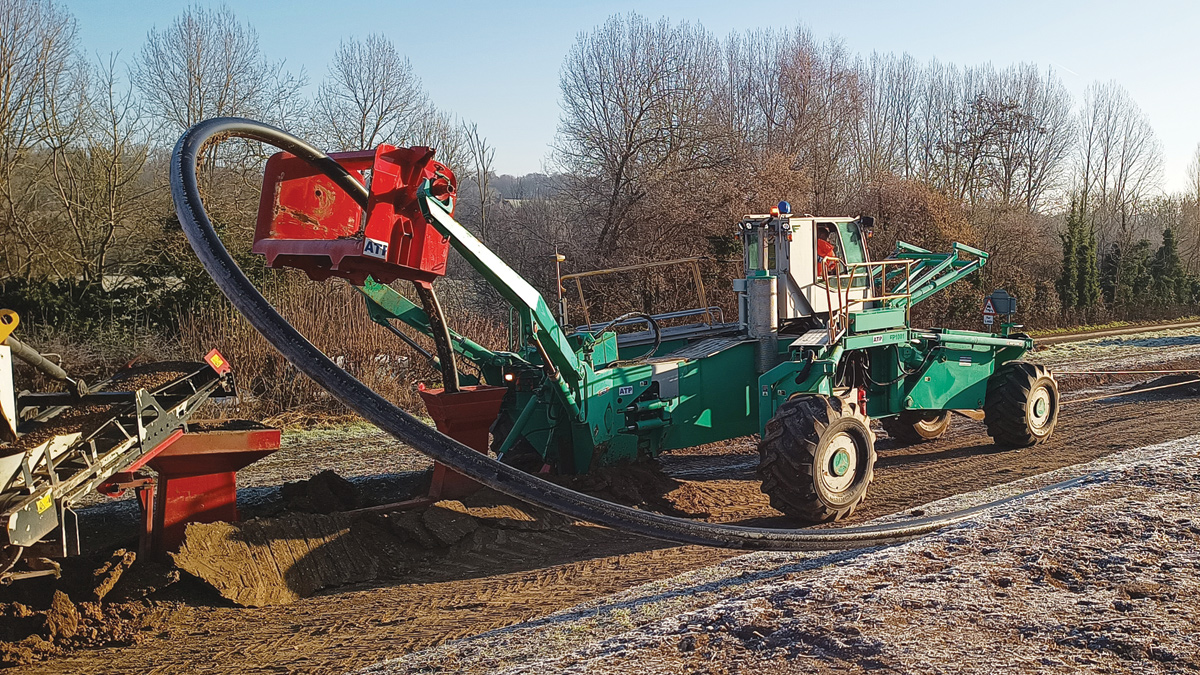
Pipe plough unit - Courtesy of MMB
Located south of the village of Chilton Foliat and north-west of the town of Hungerford there is an existing sewage treatment works (STW) that serves a population of approximately 400 people. The works discharge into the River Kennet, one of England’s most important chalk streams which is home to an extensive range of rare plants and animals that are unique to the area, and as such it is designated as a Site of Special Scientific Interest (SSSI). The project objective is to divert flows from Chilton Foliat STW by extending the existing rising main from Mill House Sewage Pumping Station (SPS) in Chilton Foliat to the adjacent catchment of Hungerford and onwards to Hungerford STW, allowing for the future decommissioning of Chilton Foliat STW.
Basis of design
The project is part of a flow compliance scheme for Thames Water working in collaboration with the local action group, Action for the River Kennet (ARK), and the Environment Agency (EA) to improve the quality of flows discharged to the River Kennet.
Mott MacDonald Bentley (MMB) developed the design to divert and extend the existing rising main pipe towards the Hungerford catchment to the south-east of Chilton Foliat. The rising main would be extended by an additional 1400m and discharge into a new 150mm diameter gravity sewer system, before connecting into the existing Hungerford sewer system approximately 310m further to the south-east.
Due to the undulating topography, the rising main section contained a mix of both rising and falling gradients along its length.
As a result of this alignment, hydraulic and surge assessments highlighted the need for additional air release valves and also a variation in pipe sizes between 125mm OD and 160mm OD to maintain the required flow velocities whilst preventing air locking in the pipe.
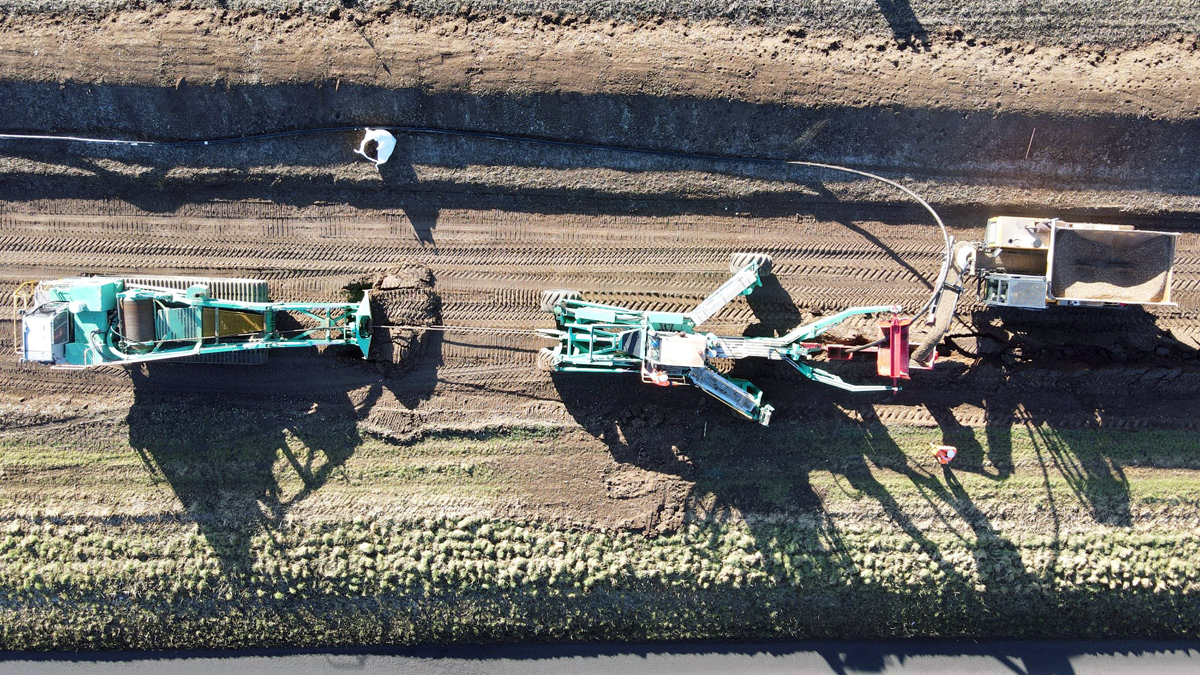
Aerial view of setup – Courtesy of A. Thomas Plant Hire Ltd (ATP)
Assessment of the existing pump arrangement at Mill House SPS confirmed that they would be suitable to transfer flows along the new rising main pipe alignment which had a reduced head to that of the previous arrangement. However, the existing pumps were determined to be nearing the end of their asset life and their replacement was also included.
The gravity sewer section was designed to maintain self-cleansing for the expected pass forward flow of up 8 l/s with the fall gradient varying between 1 in 90 and 1 in 60.
Rising main installation method selection
With consideration towards health, safety, and the environment, as well as constraints within the programme, a fast and effective pipe installation method was deemed to be crucial. Following detailed geotechnical site investigation works, various methods were explored. In consultation with A. Thomas Plant Hire Ltd (ATP), and drawing on MMB’s experience of using pipe ploughing from projects with other clients, the project team confirmed that the ground conditions were well suited to using pipe plough pipe installation equipment; with projected pipe laying rates in excess of 500m per day.
Due to the SSSI status of the river and the surrounding area, and the Kennet and Lambourn Floodplain Special Area of Conservation (SAC) being home to the endangered Desmoulin’s whorl snail, MMB had to produce a Habitats Regulations Assessment (HRA) to mitigate any potential impacts of the pipe installation; a process made more onerous by a recent case law.
As the largest environmental risk to the protected areas would be the contamination of groundwater or its escape overland, the use of the pipe plough would help reduce, and even eliminate, the potential for contaminated surface and groundwater from reaching the adjacent watercourses.
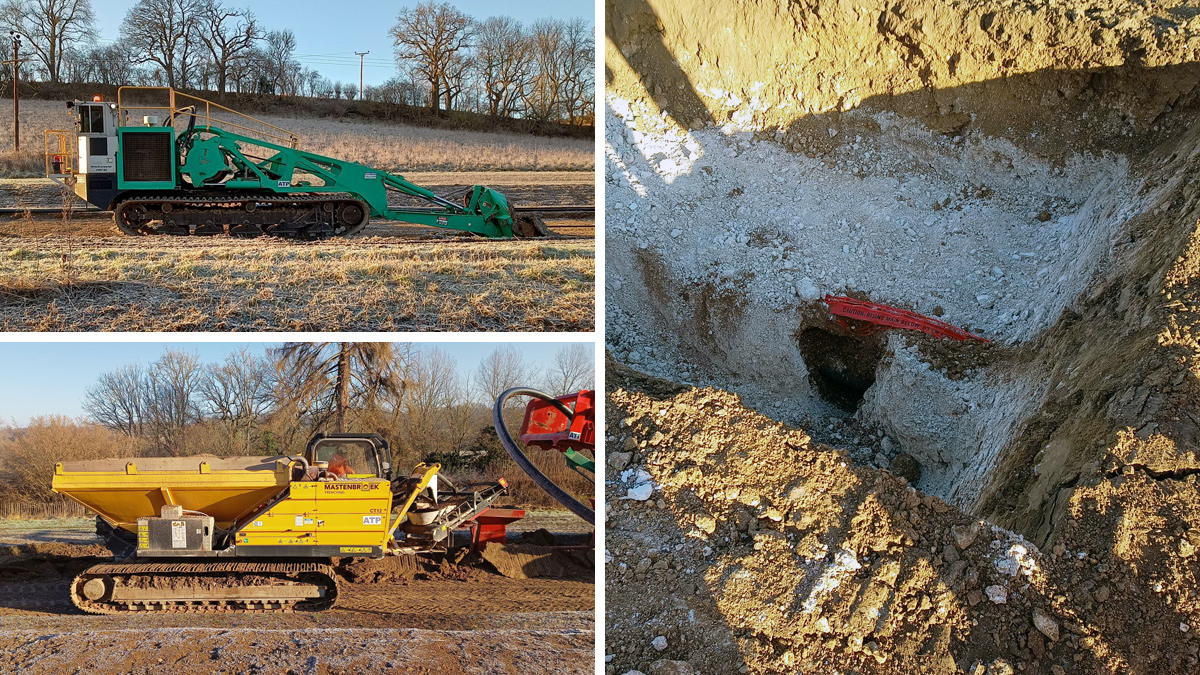
(top left) winch/anchor unit, (bottom left) bedding conveyor and (right) test pit on installed pipe – Courtesy of MMB
Pipe plough benefits
The quality and safe nature of the installation, as well as the programme and carbon efficiencies made pipe ploughing a strong solution for the installation of the rising main. There are many benefits to using pipe ploughing techniques other than just improved installation time, lessened disruption and reduced visual impact.
Using polyethylene (PE100) pipe jointed using electrofusion in an above-ground, controlled environment, removes the need for any persons to work within the confined space. Furthermore, the pipe plough is a pipe install method that is highly configurable and a standardised process that allows for the simultaneous installation of pipework, pipe bedding and marker tape, preventing the need for open excavations.
Challenges
As pipe ploughing is an emerging technology and new to Thames Water, there were some initial concerns how the design requirements would be met. However, MMB were able to offer reassurance through engagement with ATP, who provided video footage and technical data to prove that the pipeline installation would be done in accordance with the standards for sewage pipelines, sewage rising mains and civil engineering specification.
Another challenge was the requirement to confirm that adequate amounts of pipe bedding would surround the pipe. This was demonstrated by the visual inspection of a 50m trial run. Where a trial hole was dug over the newly installed pipe. Happy with the information and demonstration, the project moved forward with the project.
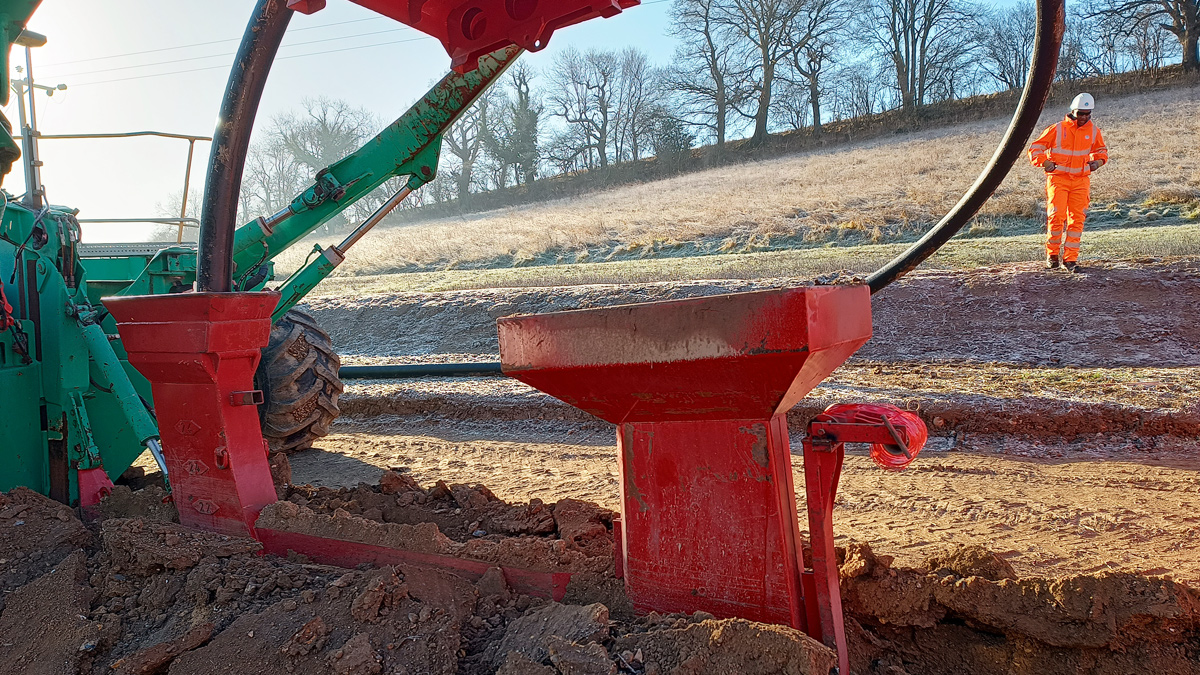
The pipe plough – Courtesy of MMB
Chilton Foliat STW Flow Compliance: Supply chain – key participants
- Client: Thames Water
- Principal designer & contractor: Mott MacDonald Bentley
- Pipe plough pipe installation (rising main) subcontractor: A. Thomas Plant Hire Ltd (ATP)
- Manhole & gravity sewer installation subcontractor: Hercules Site Services
- Pumps: Xylem Water Solutions
Progress
- Design Start Date: 16 May 2022
- Construction Start Date: 16 January 2023
By the end of March 2023 the following works were completed:
- Topsoil stripped along the approximate 1800m long working easement.
- Above-ground electrofusion welding of PE100 pipework including a number of lengths for random destructive testing of joints.
- Installation of 1400m of PE100 rising main over 2 days.
- Reinstatement of the subsoil ready for chamber installation.
- Installation of 310m of clay gravity sewer by traditional open cut methods.
- Construction of all air valve, washout and gravity chambers.
In the near future the final connection will be completed along with the final surface reinstatements. The next project in the area will be the decommissioning of Chilton Foliat STW.
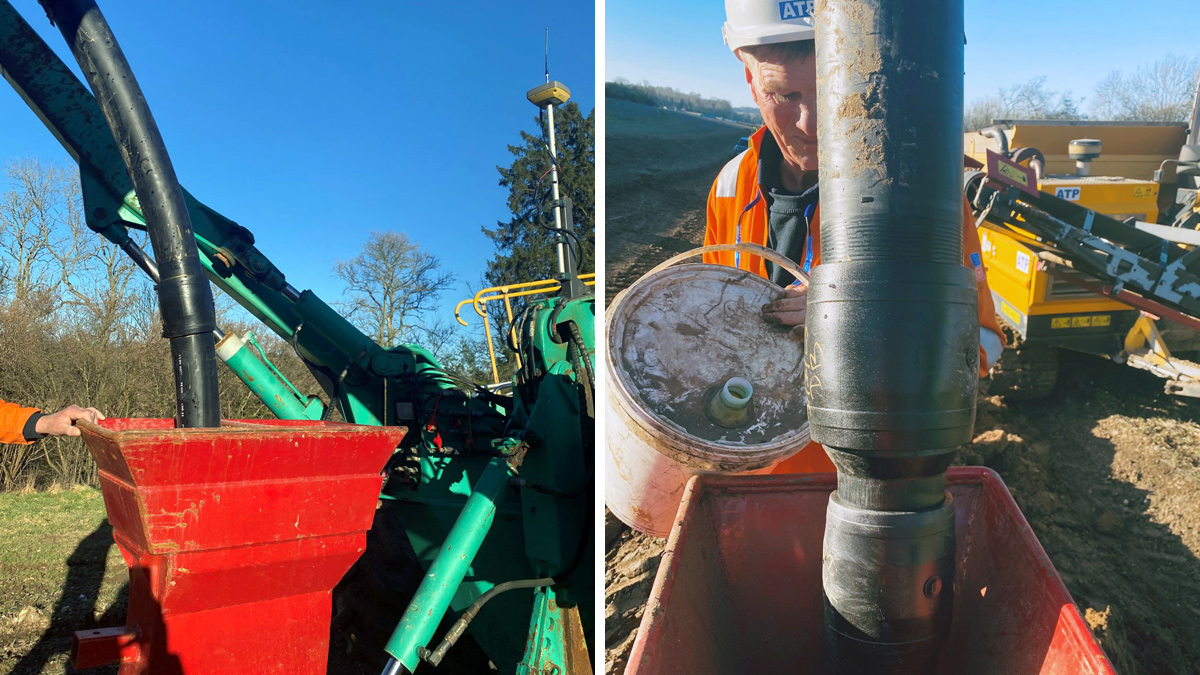
(left) Pipe plough in progress and (right) reducer installed – Courtesy of A. Thomas Plant Hire Ltd (ATP)
Future uses of the pipe plough
Due to the guidance system and the fully adjustable plough, it is also possible to lay at a set gradient, meaning the pipe plough can be used to lay gravity sewer pipeline as well. However, consideration of standards and specifications will need to be considered.
ATP have also advised that given suitable design and pipe material selection together with suitable ground conditions, a ploughed pipe could be installed without pipe bedding, potentially allowing for a reduction in carbon and plant required on site; something MMB are keen to pursue.
Thames Water have also been suitably impressed with the technology’s potential to reduce programme, lessen carbon, and eliminate environmental risks, and are looking to promote its use on other framework projects through their internal innovation share mechanism. A preliminary review of their asset standards will be undertaken to see if updates could be made to encourage alternative methods of installation.




